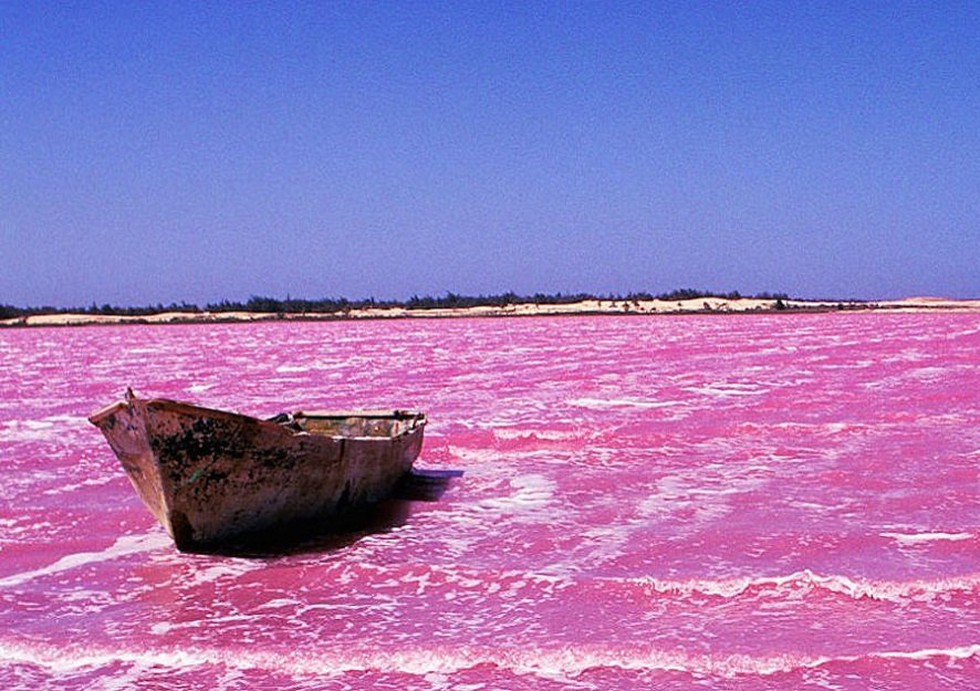Lake Retba, commonly known as Lac Rose or the Pink Lake, is situated approximately 35km away from Dakar, Senegal. Nestled in a depression, its shoreline is 6.5 meters below sea level.
Unique Characteristics
Isolated from the sea by sand dunes, Lake Retba gets its freshwater from the seasonal water table in higher dunes. The lake’s primary water source is the sea, contributing both water and salt. Surprisingly, the lake’s waters host minimal life, with only microscopic algae and bacteria.
Tourist Attraction and Challenges
The Pink Lake has been a major tourist attraction due to its distinctive pink hue. However, it faces challenges, particularly from artisanal salt mining, affecting both tourism and the lake’s ecosystem. Despite efforts to address these issues, the lake is experiencing a decline.
Pink Coloration and Causes
The lake’s pink color comes from the proliferation of halophilic green algae, specifically Dunaliella salina, which contains red pigments. These algae, resistant to salt, thrive in high salinity conditions, contributing to the lake’s unique appearance.
Southern Shore Challenges
The southern shore faces challenges due to a drainage channel introduced in 2022, leading to the lake’s filling with solid particles and water dilution. The altered salinity affects the growth of Dunaliella salina, impacting the lake’s ecosystem.
Northern Shore Vulnerabilities
The northern shore is especially sensitive, with motorized traffic threatening dune stability and the potential destruction of trees that anchor them. Urbanization poses a risk to the shallow aquifers supplying the lake’s water, affecting water quality.
Impact on Ponds and Chemical Analyses
Ponds in the northern part, once connected to the sea, now face pollution. Recent chemical analyses show a significant increase in nitrate levels, potentially linked to nearby hotel establishments and uncontrolled urbanization. This pollution jeopardizes the lake’s suitability for consumption.
Salt Supply and Mining Impact
The lake receives a constant supply of salt through the dunes, a phenomenon observed since 2008-2009. Contrary to beliefs, salt extraction has not harmed the lake but prevented it from filling up. However, fraudulent exploitation of shell middens and dune sands poses a threat.
Future Threats and Solutions
If salt extraction is prohibited due to pollution, the lake could face rapid filling, leading to its disappearance. To protect the lake, authorities should prohibit mining of shell middens, exploitation of dune sand, control farming and gardening activities, rehabilitate casuarina tree belts, and implement integrated management strategies.
Preservation Measures
Preserving Lake Retba requires a holistic approach, including the ban on urbanization and tourist facilities on dunes, environmental education, and awareness-raising initiatives. Integrated management should benefit both wildlife and the local population, acknowledging the lake as a crucial “resting place” for wildlife.
